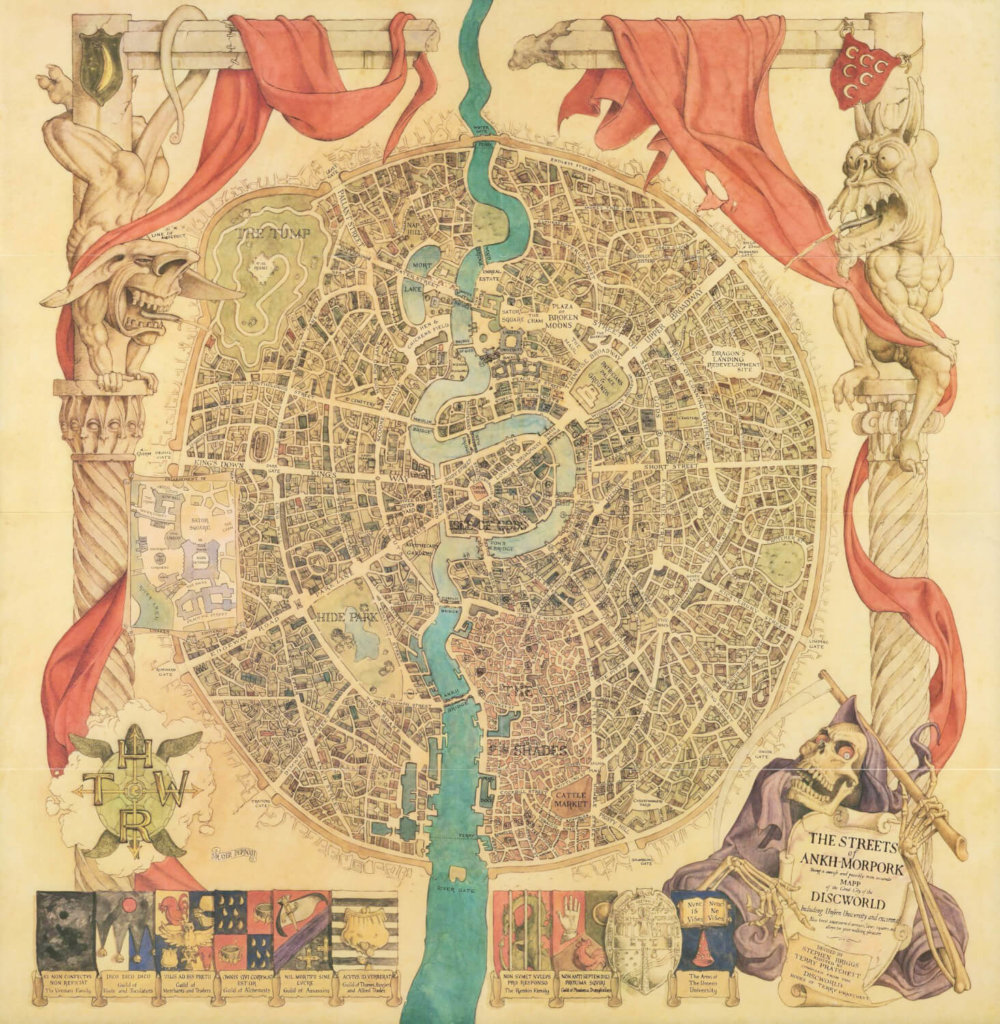Truth–are we there yet?

There’s a new planet in the solar system
There’s nothing up my sleeve
I’m pushing an elephant up the stairs
I’m tossing up punchlines that were never there. . .
~ REM, “The Great Beyond”
Have any of you readers ever been to Ankh-Morpork? Sounds like a craving for food, doesn’t it? But, no, it’s the capital of Disc World. Yes, and where is that you ask? Well, of course, it’s a flat world resting on the backs of four elephants standing on top of a gigantic turtle moving slowly through space.
Sound a little bit like Trumpian America?
Author Terry Pratchett created it and has written many books in his Disc World series. They are supposed to show humor (which, indeed, they do), but these days they are also coming very close to a test of truth in our country. The Pratchett work I just finished carries a theme that is quite close to one in our nation currently. The book is titled The Truth, and it, like many Americans today, wonders where that truth rests.
Pratchett wrote the book nearly 20 years ago, and as with well-thought-out novels, its theme holds over time. Throughout the book, “truth” is how we display it, and displaying it is one of the main jobs of journalism. Thus, truth becomes a binding factor in the Ankh-Morpork Times, one of two major newspapers in the Disc World capitol. Managing Editor William de-Worde tries to draw truth from situations and turn that truth into news. In doing so, he has to deal with a great variety of creatures, a variety for which Disc World is well known. Some of these creatures are quite human, but others are trolls, dogs, elves, vampires—each displaying characteristics of its species and each with an agenda for life on Disc World.
His photographer, for example, is a vampire named Otto. Otto has developed a fascination for what he terms “iconography” or pictures that are more than simply images. They are icons of the situation he is shooting. The problem he faces as a vampire is centered on the flash of his camera. When it goes off he is turned into dust and must imbibe a drop of blood in order to regain his form.
The elves are short and smart and very productive, which is why they are the paper’s printers. Trolls form the “Watch,” the closest thing to a police force on the planet.
De-Worde has a competitor who edits a rival newspaper called the Inquirer. Sounds a bit like Charlotte—one town, several papers, a police force from somewhere else. The question asked, then, is, “What’s the truth citizens get from the media?” Each news source claims its version is the correct one. The Ankh-Morpork Times also appreciates the value of getting news onto the street as fast as possible, and unlike current Twitter days, the news goes public via print. Dwarfs run the presses, but they are the speediest little fellows one can imagine, and the words for an article are barely out of de-Worde’s mouth before they are printed on a hand-cranked press, the old style system that some of us remember and still love.
Aah, but the real questions then as now are, “What is true, and what is fake?” “What is good for me and bad for you?” And, of course, the royal identity, “Who are you, and why should I care what you think?”
Truth is a human attribute. It is what de-Worde says is his. “Well, I wrote an article in the Times!” he snapped. “And what’s in there is what I say! Me! Because I found things out, and checked things . . . I’m not some stupid rumor put about to make trouble!” When asked about what to put inside the paper, de-Worde responds, “We just decide.” When asked whether she thinks it’s really true, the paper’s primary writer says, “Who knows? This is a newspaper, isn’t it? It just has to be true until tomorrow.”
I have just returned from a Charlotte News editorial meeting where we, too, spent the better part of two hours “deciding” what was true and important news for our readers to devour. The topics were many. The questions ranged from, “What do people in Charlotte want to know?” “What should they know?” “Where do matters stand at this moment in our village?” And, “Who can we tap to delve in and write about them?”
Truth, then, is a combination of several factors. “Fake news” comes about through intent. Never once did I hear our staff express intent in producing “fake news.” We may have jibed at the competition, but chuckling at our innuendoes, knowing that somewhere along the line, they were limited in the extent of truth they could publish. Disc World’s Lord Vetinari, though, expressed amazement at how the news in the Times “so neatly fits the space available.”
Space and truth are cohesive in print media, and “Because nothing has to be true forever. Just long enough, to tell you the truth.”
The turtle moves slowly, knowing that the truth in the universe is limitless, and, therefore, swiftness will only get you in trouble on the curves. Thus, the nature of this beast is to move as slowly as is inhumanely possible, leaving speed up to the dragsters.

